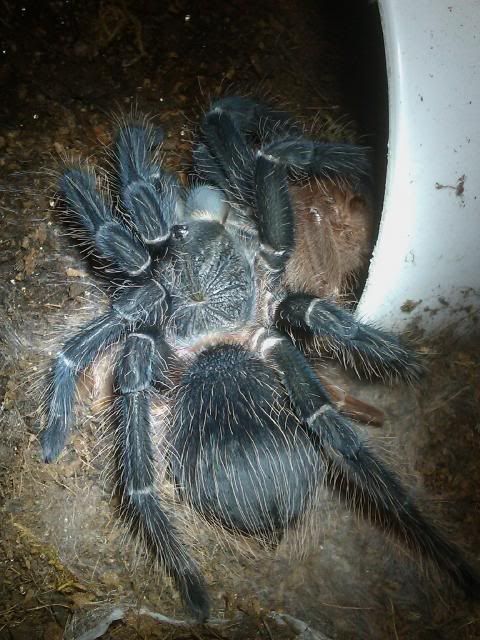tarantulamama
Arachnopeon
- Joined
- Aug 24, 2013
- Messages
- 3
My Braz. Salmon Pink (Lasiodora parahybana) has recently gotten really pale. I have had troubles with him lately because his last molt left him with an extra leg where his pedipalp should be (which I was instructed to pull off) and his chelicerae were also deformed which gives him a lot of trouble when eating. He hasn't really been eating well until recently and I've noticed his opisthosoma has actually grown. I'm wondering if this may be a sign that he's not doing too well or maybe a sign that he is ready to molt.






